NATICK, Mass. — The U.S. Army Research, Development and Engineering Command Soldier Center at Natick is testing new Army Combat Boot (ACB) prototypes at three different basic training and active duty installations over the next four months. The effort will gather Soldier feedback toward development of improved footwear.
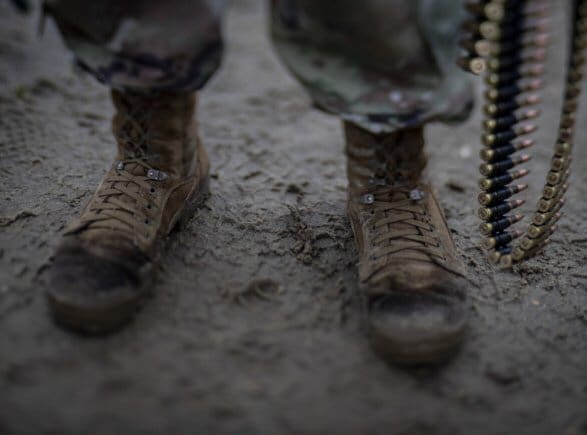
The U.S. Army Research, Development and Engineering Command Soldier Center at Natick is testing new Army Combat Boot (ACB) prototypes at three different basic training and active duty installations over the next four months. The effort will gather Soldier feedback toward development of improved footwear. Pictured, a U.S. Army Soldier from the 1-114th Infantry Regiment stands in the mud holding 7.62mm ammunition during M240 machine gun weapons training on Joint Base McGuire-Dix-Lakehurst, N.J., Nov. 6, 2018. (Photo Credit: Master Sgt. Matt Hecht)
The Army’s current inventory of boots includes seven different styles designed for different environments and climates. The boots issued initially to recruits are the Hot Weather and Temperate Weather Army Combat Boots. Requirements for these are managed by the Army Uniform Board as part of the recruit “Clothing Bag.” The Program Executive Office Soldier’s Project Manager Soldier Protection and Individual Equipment maintains and updates the specifications for both boots.
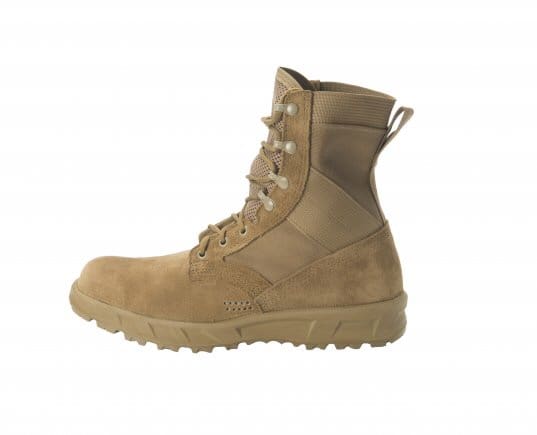
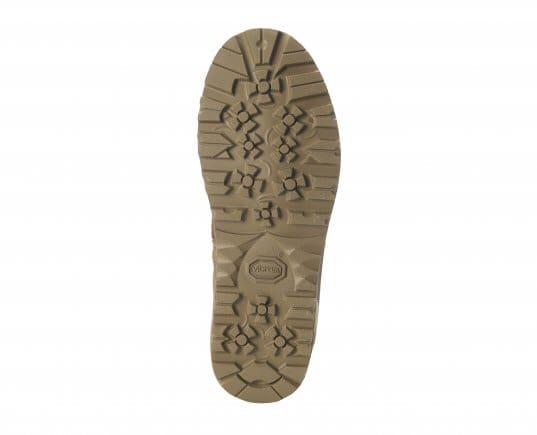
The Army’s current inventory of boots includes seven different styles designed for different environments and climates. The boots issued initially to recruits are the Hot Weather and Temperate Weather Army Combat Boots. (Photo Credit: Mr. David Kamm (RDECOM))
The current generation of Army Combat Boots has not undergone substantial technical or material changes since 2010. New material and technologies now exist that may improve physical performance and increase Soldier comfort.
“Great strides have been made recently in the Army’s environment specific footwear, for jungle, mountain, or cold weather locations, but there is substantial room for improvement in the general purpose boots which are issued to new recruits,” explains Anita Perkins, RDECOM Soldier Center footwear research engineer and technical lead for the Army Combat Boot Improvement effort. “Most components of these combat boots have not been updated in almost 30 years.”
Surveys conducted by the Soldier Center report Soldier satisfaction with ACBs is lower than that with commercial-off-the-shelf, or COTS, boots, leading many Soldiers to purchase and wear COTS boots.
“The survey of over 14,000 Soldiers world-wide discovered that almost 50% choose to wear COTS combat boots instead of Army-issued boots,” Perkins said. “Many Soldiers reported choosing combat boots from the commercial market because the COTS boots are lighter, more flexible, require less break-in time, and feel more like athletic shoes than traditional combat boots or work boots.
Unfortunately, these characteristics often come at the cost of durability and protection.”
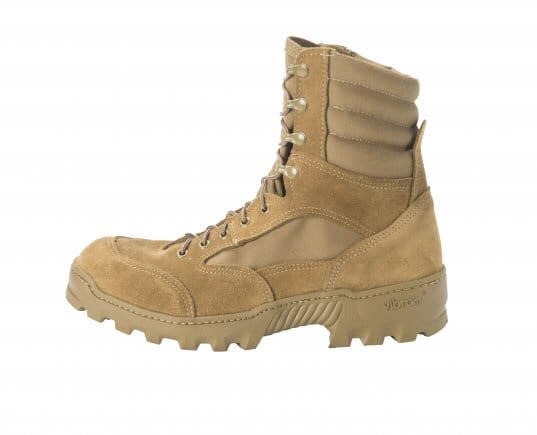
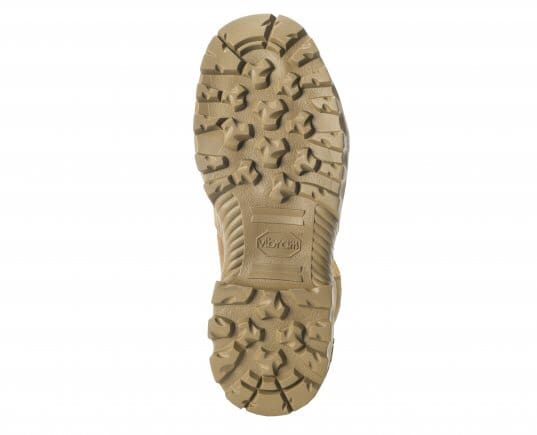
The Soldier Center’s Footwear Performance team believes new technologies can bridge the gap between the lightweight, comfortable, COTS boots and the durable, protective, Army boots. Recent advancements in synthetic materials and rapid prototyping can produce a boot with potentially the same protection, support, and durability of current Army boots, but lighter and more comfortable out of the box. To reach this goal, the Soldier Center is evaluating new types of leather and even some man-made materials which are much more flexible than the heavy-duty, cattle hide leather used in the current boots.
“Also included in the prototypes we are testing are new types of rubber and outsole designs, which are more than 30% lighter than the outsoles on the current boots,” said Al Adams, team leader for the Soldier Clothing and Configuration Management Team at the Soldier Center.
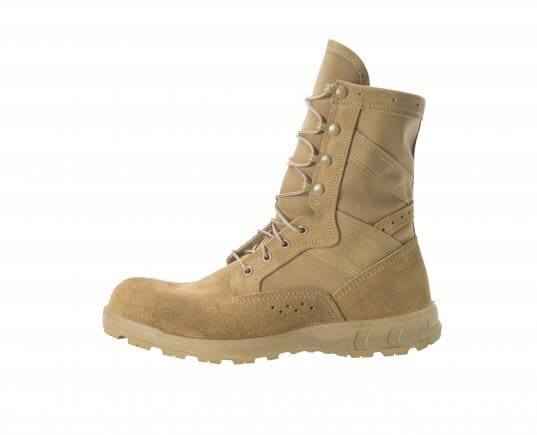
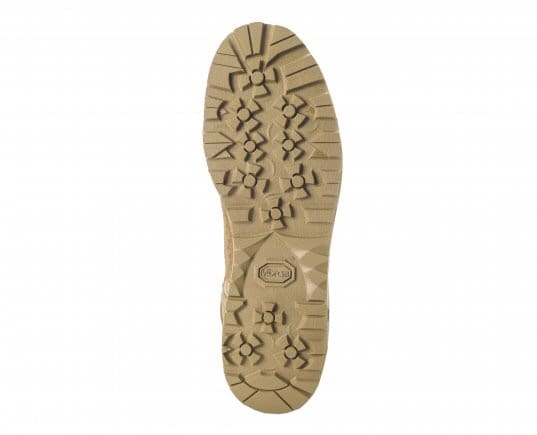
When working with industry to develop the prototype boots for this effort, Adams and Perkins put an emphasis on cutting weight. The boots being tested are up to 1.5 pounds lighter per pair than the ACBs currently being issued.
“In terms of energy expenditure or calories burned, 1-pound of weight at the feet is equivalent to 4-pounds in your rucksack,” Adams said.
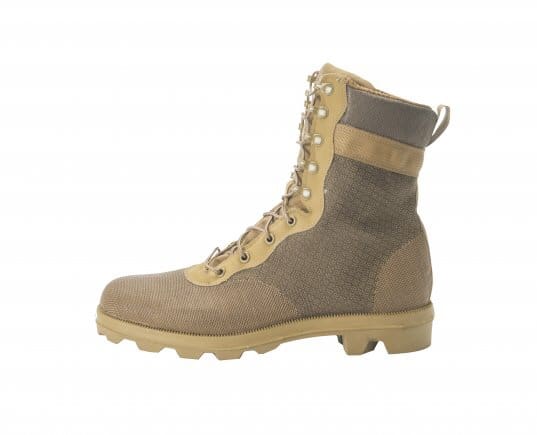
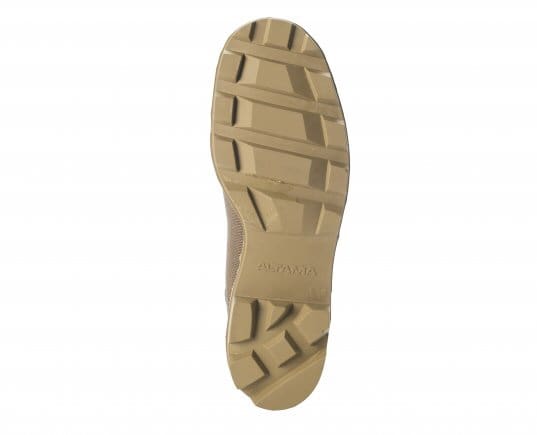
The test boots will be fitted and fielded to 800 basic trainees at Fort Leonard Wood, Missouri and Fort Jackson, South Carolina, followed by 800 pairs going to infantry Soldiers at Fort Bliss, Texas. The Soldier Center team will be hand-fitting each pair of prototype boots throughout the month of January and then return in March and April to collect surveys and conduct focus groups to gather specific feedback.
“Soldiers live in their boots and many will tell you that there is no piece of equipment more important to their lethality and readiness,” said Adams. “A bad pair of boots will ruin a Soldier’s day and possibly result in injuries, so we really believe that each of these prototype boots have the potential to improve the lives of Soldiers”.
Simultaneous to the field testing, lab testing will be conducted on the boots at the Soldier Center to quantify characteristics like flexibility, cushioning, cut/abrasion resistance, and breathability. The combination of lab testing and Soldier recommendations will identify Soldier-desired improvements to the boot prototypes and rank the state-of-the-art materials and designs for Soldier acceptance, durability, and safety. The Soldier Center will then provide recommendations to PM SPIE and the Army Uniform Board to drive the next generation of Army Combat Boots.
“The development of new boots take advantage of the latest materials technology, and are functional and comfortable, is critical to ensuring that our Soldiers are ready to fight and win in any environment,” said Doug Tamilio, director of the RDECOM Soldier Center. “Soldiers are the Army’s greatest asset, and we owe it to them to make them more lethal to win our nation’s wars, and then come home safely.”
By RDECOM Soldier Center Public Affairs


Maybe I missed it but can you explain the specific boots in the pictures and what their intended environment is?
Your local PAC, the Pentagon, the nearest motor pool …
Any mention of the cold weather boots that have been in testing?
Unfortunately very few Soldiers (at all level and ranks) actually understand what a boot should provide. I am convinced that many of the knee and back injuries in Soldiers are a result of rucking and working in footwear that is crap. I have yet to find any combat boot approved for wear (whether issued or COTS) that provides the equivalent support, comfort and protection of even a mid grade hiking boot. (I know it is not a perfect comparison but the Army could do so much better.)
Agreed. But then who should test them? Thru-hikers?
Some suggestions… Ranger School, SF teams, the Mountain School.
“A bad pair of boots will ruin a Soldier’s day and possibly result in injuries, so we really believe that each of these prototype boots have the potential to improve the lives of Soldiers”.
So why MUST these boots have 8” shafts? The civilian market has decided that 8” shafts are unnecessary.
Why does the “Uniform Board” have any say on the boots? This is a component of a combat system, not something for parade.
Why are these tests always with initial entry soldiers (which includes most of a line infantry battalion)? Why don’t they test them at Ranger School and with 1st SFC(A)? Afraid of the feedback they’d get?
If they tested them at Ranger School, a bad pair of boots could result in a student being injured or failing. BCT is a much more forgiving environment. Natick doesn’t like to test equipment for GP Forces with SF because SF Soldiers tend to take better care of their equipment than Soldiers assigned to GP Forces. It results in skewed feedback.
When I was in Ranger School in 91, one of the platoons in my company evaluated black jungle boots for big army so it can (and has) been done there in the past.
FYI-
I could never understand why, in the transition from Green to Black, that the back of the upper would blow out.
The taller shaft you refer to is to protect the lower leg from things encountered while brush bustingand (things that poke, puncture, and abrade) and is also less likely to get your boot sucked off your feet when deep mud slogging…all things civilians avoid like the plague.
You’re not wrong, but the lower leg protection could come in the form of gaiters/leggings if needed. A tall boot for the jungle, maybe, but I don’t think that it should be the standard height for all boots.
I won’t pretend that the uniform board has way too much say in all of this.
With Infantry OSUT being extended to 21 weeks, I have to wonder why IET troops at Ft Jackson & FLW are receiving these rather than Benning, where they could record design/material performance based on an extended exposure to ‘combat soldier’ use and conditions, for a longer period of time .
Hopeful that at least one of these contenders will have a toe box wide and tall enough for a man’s foot. Except for Bellevilles, all the issued desert boots I received were too narrow and the toe box was so low it rubbed the tops of my toes. And no, going with a larger size would not help.
damn… best sole pattern ever -panama, got such a gay upper!!!
That upper is 200 times as abrasion resistant as standard fabric uppers.
The upper is also probably really easy to clean since it doesn’t have any protruding seams to brush around.
200x more resistant than full grain leather, too??
Once again: What was wrong with old Jungle boots??
But what are the boots on the soldier in the top photo? They look comfy as heck.
Who makes those jungles and where can I buy a pair?
Hopefully the fix the sizing on the boots. About 8 years ago they had it figured out, then they changed the last. If the current boots fit my heel they are too narrow around the forefoot, and if they fit the forefoot they are too loose in the heel.
IDK why the Army decided that one shape fits all was a good idea.
NEWS FLASH BOG ARMY. Suede is stupid and was only put on a boot for the Kuwaiti desert. Since big Army is so worried about a near peer fight and is Third Gen/Hybrid war focused maybe they should realize that we won’t be fighting the Russians or the Chinese in the Kuwaiti desert. Top end civilian hiking boots don’t use suede. Go to synthetic or smooth leather and end this AR 670-1 (because we have always done it this way) nonsense. Have you ever walk through a dew covered field in the morning in suede boots? You feet are soaked in 2 minutes. How many toes and feet are going to be lost in a shooting war to bad boots? How many operations will fail bc we have the best gear for the last war? Start by making the best boots you can, then change whatever silly uniform regulation you need to. Don’t neuter the designs before they even left the drawing board just to fit within AR670-1. Typical backwards thinking.
Amen… also, for jungle sole, all these trekking patterns are crap, as they have narrow crannies which got immediately filled with mud/sand, which becomes dead weight. Nothing like that on proven Panama.